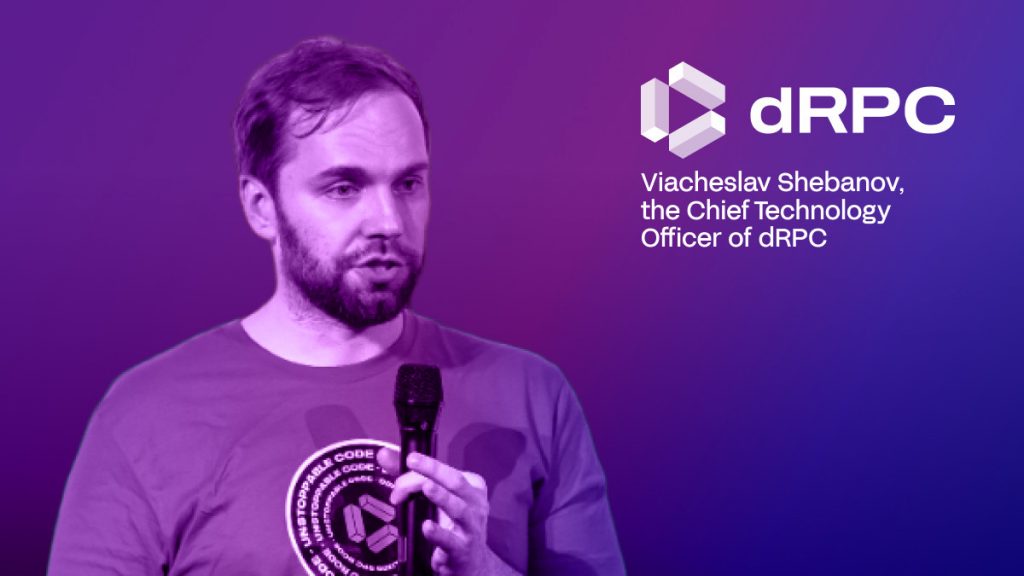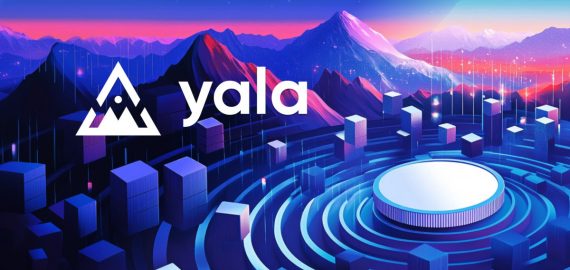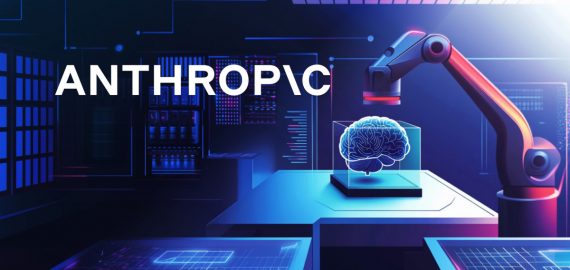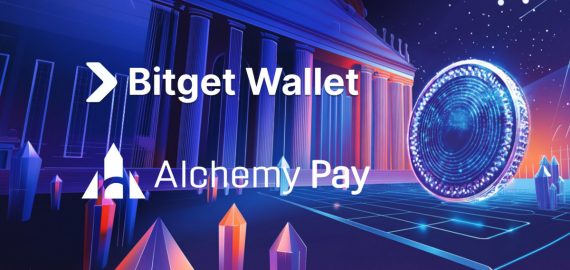AI Meets Blockchain: Inside dRPC’s Revolutionary Approach to Load Balancing and Latency Optimization


In Brief
dRPC’s Chief Technology Officer, Viacheslav Shebanov, discussed the balance between decentralization and practical business needs, AI integration, and Web3 infrastructure challenges.

During the recent Hack Seasons Conference in Brussels, we had the opportunity to sit down with Viacheslav Shebanov, the Chief Technology Officer of dRPC. In this enlightening interview, Shebanov offered insights into dRPC’s innovative approach to RPC nodes and discussed the intricate balance between decentralization and practical business needs.
His perspectives on the future of blockchain technology, the integration of AI in their services, and the challenges facing the industry provide a fascinating glimpse into the Web3 infrastructure.
Many entrepreneurs are drawn to their field by a specific moment or event. What was your journey to Web3?
I’ve been working in the tech industry for more than 10 years in big companies like social networks and banks. In 2022, a series of events convinced me that crypto is actually important.
Previously, I was more skeptical about it because I didn’t see the real use case. But after some events, I understood that financial independence and freedom to transact are very important things that can be taken away from you. Crypto is the only saving grace here. So, I changed my mind and decided to search for work in crypto.
How does dRPC’s approach to RPC nodes differ from that of traditional centralized RPC providers? What specific advantages does this offer regarding network resilience and performance?
We’re pretty different from the average RPC provider because we do not host our own blockchain clients. We only use the community ones. Typically, if you’re building such a company, you will have three main components: a load balancer, a web UI, and blockchain clients. Centralized RPC providers own all of these things.
We decided to start with decentralizing the blockchain clients. We have a permissioned pool of 25 to 30 different independent companies that we route requests. Our main core business is building a sophisticated balancer that allows us to offset individual provider problems and allows clients to not care about whether we’re decentralized or centralized.
Speaking of advantages, the most obvious one is that we can support a lot of chains. We support more than 60 blockchains. This is possible because we don’t need to manage all the complexity ourselves – our providers do that. When we add a new network, we don’t need to learn too much about it ourselves. We just need to find people who already do that.
Another advantage is that our latency is pretty good, often better than many centralized providers. We have infrastructure in Singapore, São Paulo, Europe, the US, and Hong Kong. Because our community providers are globally distributed, it’s quite easy to maintain this global infrastructure.
Can you elaborate on how dRPC’s network of independent third-party partners and public nodes enhances censorship resistance?
Currently, I wouldn’t say it significantly enhances censorship resistance. Many providers don’t censor, and the situation with censorship is not so dire that it’s an imminent threat. However, our decentralized structure does provide some advantages in this area.
A centralized RPC provider is a single entity that owns the whole infrastructure. If they need to comply with new sanctions or regulations, they have no choice. In our case, it’s more complicated. Our 25 to 30 providers are located in different regions and countries. Some of them may not have to comply with certain regulations.
Also, while we have a centralized gateway, this is just a piece of code that can be run by anyone. If censorship became an issue, we could give the code to another company located in a different jurisdiction.
Can you elaborate on your vision of the emergence of AI and blockchain? How does dRPC’s AI-driven load balancer work?
Honestly, I don’t believe a lot in blockchain and AI synergy. In our case, we use a simple AI model to predict latency. When clients send us a request, we need to select the best possible provider who will respond the fastest. Our AI model takes various parameters for each provider and tries to predict their latency in the next five seconds. We do this every five seconds.
This allows us to select the best provider in terms of latency in real-time, which can cut latency and offset individual provider latency problems. It’s not too connected to blockchain. It’s just an average AI usage in any tech project. You can compare it to auctions in social network ad systems.
Do you plan to implement any other AI solutions?
We’re not sure. AI is just a tool. If we see the need, we will do that. We have the experience and skill for it but it’s not the goal to implement AI for its own sake. The goal is to satisfy customers.
Can you discuss some of the most challenging technical hurdles you have on the pathway to decentralization?
The biggest hurdle is that clients actually don’t care about decentralization. They don’t really need it, so we’re not pushing it too hard. For us, decentralization is the means, not the end. We’re considering making our pool of providers permissionless, which could bring benefits like better coverage for less popular blockchains. But it also brings a lot of complexity.
The market isn’t demanding full decentralization right now, and we’re still a business, not an ideological project. We need to think about our customers first.
Do you have any plans to expand your services?
Web3 right now is a huge area, and everyone needs infrastructure. So, we’re in a pretty good spot in this sense. The more the space grows, the more business requests and clients we have. We’re always thinking about improving our service and changing our approach to how data is used and retrieved within the space. But I can’t share anything specific right now.
How do you foresee the emergence of Web2 and Web3 in the future, particularly in finance?
I think most of the financial system will eventually move to blockchain. It’s just a matter of time, but it will take a lot of time.
What do you think about the future of decentralization and its challenges?
It depends on regulations mostly. The problem will probably become more evident because there will be more and more regulations, and those regulations will likely be conflicting in different jurisdictions. Whether Web3 will face censorship or not totally depends on a series of events and different companies like us.
If we succeed, we can probably eliminate the probability of censorship on the RPC layer. But there are many layers – L1s, L2s, and others. For example, we talk a lot about Ethereum censorship, but many L2s right now can censor transactions, and we’ve seen this in recent events like some hacks. The Sequencer is a tool of censorship.
There’s no universal solution. We’ll have to think about each problem and solve it separately.
Disclaimer
In line with the Trust Project guidelines, please note that the information provided on this page is not intended to be and should not be interpreted as legal, tax, investment, financial, or any other form of advice. It is important to only invest what you can afford to lose and to seek independent financial advice if you have any doubts. For further information, we suggest referring to the terms and conditions as well as the help and support pages provided by the issuer or advertiser. MetaversePost is committed to accurate, unbiased reporting, but market conditions are subject to change without notice.
About The Author
Victoria is a writer on a variety of technology topics including Web3.0, AI and cryptocurrencies. Her extensive experience allows her to write insightful articles for the wider audience.
More articles

Victoria is a writer on a variety of technology topics including Web3.0, AI and cryptocurrencies. Her extensive experience allows her to write insightful articles for the wider audience.

















































